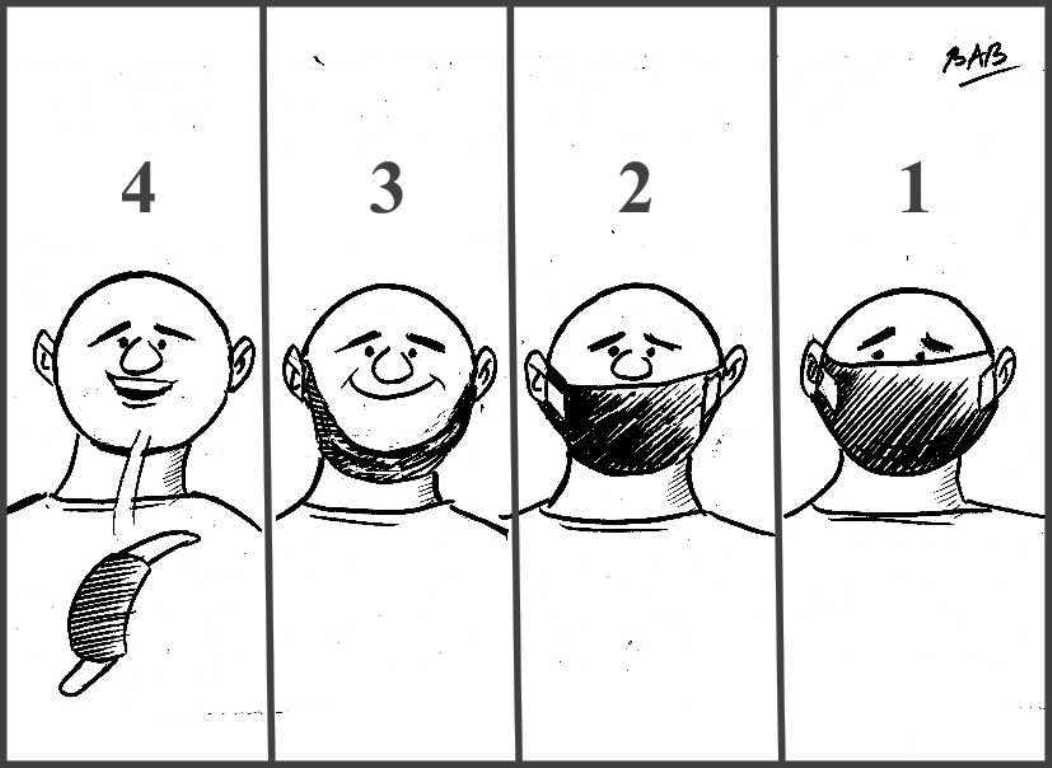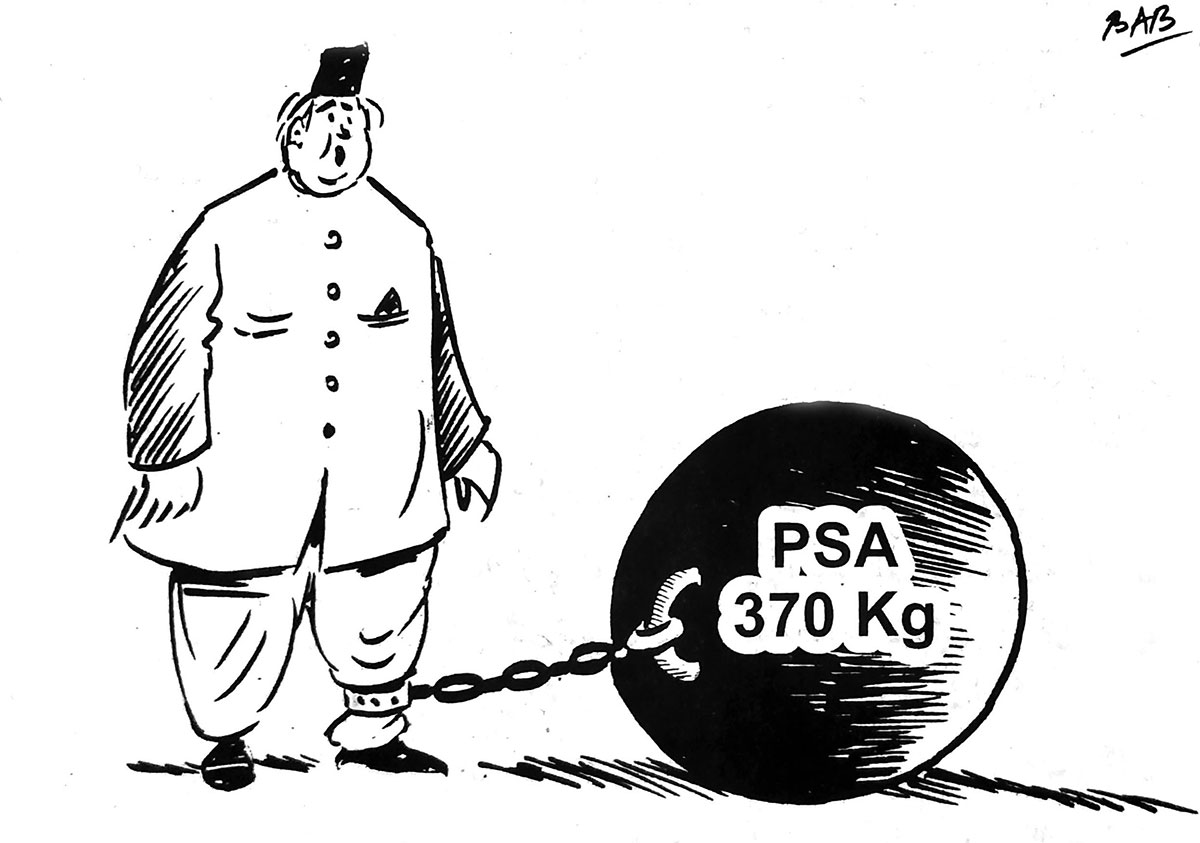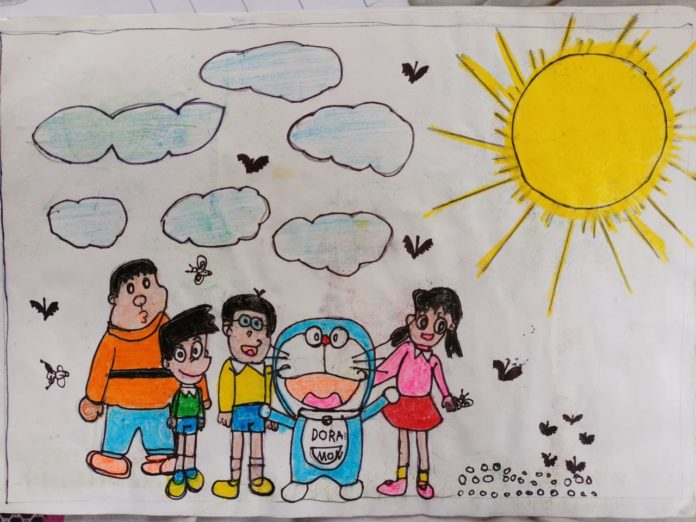by Vijay GarG
A cartoon is a simple drawing of familiar objects or characters, often rendered with lively colours to entertain and engage viewers. Cartoons can also refer to animated films, movies, or short videos. Traditionally aimed at children, cartoons appear in newspapers, comic books, and magazines, or are broadcast on television. While their primary purpose has been entertainment, cartoons are increasingly used for educational purposes and spreading awareness.

Enhancing Education through Cartoons
Teaching is a challenging profession that requires effective strategies, technologies, and innovative ideas to facilitate the transfer of knowledge. Cartoons have long been used as a teaching aid, making learning a more engaging and enjoyable experience for students. They bring life to otherwise dull subjects and pages, capturing students’ attention and aiding in comprehension.
Cartoons are particularly eye-catching. When opening a page with a cartoon, it’s often the first thing noticed, allowing students to grasp concepts visually before reading the accompanying text. A single cartoon can effectively replace a page full of text, making learning more efficient. Children’s books, especially for toddlers and preschoolers, are filled with cartoon images, as these leave lasting impressions and aid memory retention. When used correctly, cartoons can be highly beneficial in education.
Modern Teaching and Cartoons
Traditional teaching methods relied heavily on systematic conversation and discussion. However, today’s generation is more inquisitive and demands more engaging and interactive learning methods. Cartoons and comic strips have proven to be highly effective in this regard. They help simplify complex subjects, making them easier to understand through visual storytelling.
Cartoons also aid in developing public speaking skills. By assigning characters from a comic strip to students and having them perform a play, teachers can boost students’ confidence and enhance their speaking abilities. This method also helps other students better understand the story, turning learning into a fun and interactive session.
Moral Education and Cartoons
Teaching moral values and good manners can be challenging. Students may not always grasp the importance of proper behaviour or the consequences of their actions. Cartoons, however, can dramatically convey these lessons. By showing cartoon videos or movies, teachers can demonstrate how to handle various situations and the consequences of not adhering to proper conduct. Cartoons can teach friendship, distinguishing right from wrong, respectful behaviour, and pursuing dreams.
Pre-Schooling and Cartoons
For preschoolers, cartoons are particularly effective in teaching nursery rhymes, the alphabet, counting, and even physical exercises. By watching cartoon characters perform exercises, children can learn and replicate these movements, making physical activity fun and engaging.
Cartoons and Artistic Development
Cartoons stimulate creativity and artistic expression. When students create their own cartoon characters or write comic strips, they develop their thinking and writing skills. This creative process also enhances brain development as students coordinate between visualizing and drawing characters and crafting dialogues.
 Enhancing Critical Thinking and Vocabulary
Enhancing Critical Thinking and Vocabulary
Cartoons often require critical thinking to interpret. Simple cartoon images without text challenge students to understand the underlying message, fostering higher-order thinking skills. Additionally, watching cartoon movies can help children expand their vocabulary, learn new words, and understand their usage in context. They also learn how voice tones and gestures can alter the meaning of sentences.
Improving Student-Teacher Relationships
Since children love cartoons, using them as a teaching tool can strengthen the bond between students and teachers. When teachers incorporate cartoons into their lessons, students are more likely to develop a liking for the teacher, enhancing attentiveness and respect.
Cost-Effectiveness of Cartoons
Compared to other educational tools like projectors and computers, cartoons are inexpensive. They can be easily printed, downloaded from the internet, or viewed on television. This makes cartoons a cost-effective and widely accessible teaching aid.
Conclusion

While excessive cartoon watching can affect a child’s health, a balanced approach can significantly benefit their development and education. The type of cartoons children watch also matters; positive behaviour in cartoons can influence children positively. Cartoons are an invaluable educational tool, offering numerous advantages. They capture students’ attention, facilitate learning, and create a relaxed, enjoyable classroom atmosphere. From preschool to middle school, cartoons play a crucial role in education, making learning fun and effective.
(Vijay Garg, MSc, BEd has been a Punjab Education Service (PES) officer who retired as a Principal. He has authored several textbooks. He lives in Malout Punjab.)


